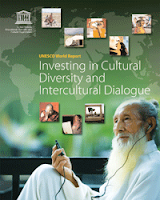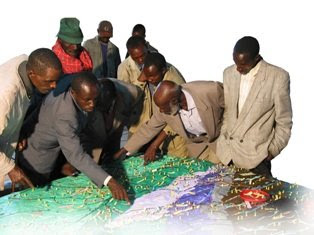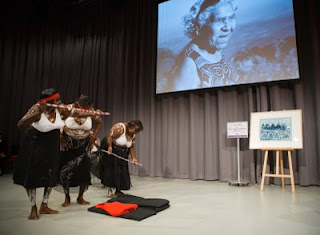The story so far…
The story began in 2005 when some of the women in the Venda community began to take action to revive their rich traditions. They initiated a number of activities with elder women and men knowledge holders to analyse and reflect on the past, what is happening to their way of life now and what they could do about the problems they face. Out of this process they identified the degradation of sacred sites and the obligatory practices associated with them as one of the root causes for the disorder in their community. They intensified their work to revive the knowledge and practices with the sacred sites guardians, who formed Dzomo la Mupo (voice of the Earth) - a sacred sites committee led by the Makhadzis (elder women custodians) in 2008, to have an organisational base from which to coordinate the growing movement with communities around this work.
Over the past 2 years the Ramunangi traditional practitioners, who are part of Dzomo la Mupo, made many attempts to communicate with traditional leaders and local authorities about the picnic site in Phiphidi Fall Sacred Site, which had resulted in deforestation, littering and a gate which prevented the custodians from entering their site freely. According to the custodians, who have been acknowledged as the guardians of Phiphidi Waterfall since before records began, such public activities in a sacred site are a violation of traditional law. This tourist site has prevented the Ramunangi from carrying out their rainmaking rituals, which are a vital part of the ritual cycle connected to the network of other sacred sites and the territory as a whole. Their appeals were ignored.
In November 2009 - benefitting from support provided by
CTA, the
Gaia Foundation and the African Biodiversity Network (
ABN) - the Mupo Foundation (which formed in 2007 to support this work), hosted an eco- cultural mapping process, in which Dzomo la Mupo and a number representatives of other communities were involved. Together they mapped the network of sacred sites embedded in the sacred territory of Venda.
The Makhadzis have continued the mapping process with each of the communities since, as a way of deepening the collective knowledge and understanding of communities about their territory and the ecological laws embedded in it and reflected in their traditions.
In April 2010, bulldozers moved into Phiphidi Sacred Site. Why? To build a tourist complex with accommodation, roads and a bar to serve alcohol. This is obviously unacceptable.
The Ramunangi custodians were left with no choice but to take the matter to court. They were supported by Dzomo la Mupo – as the violation of one sacred site affects the viability of the whole network of sacred sites as well as the territory. Hence their strong solidarity in working together to protect all the Venda sacred sites as a system.
Court interdict – moral and legal victory
On 25th June 2010 Dzomo la Mupo and the Ramunangi custodians applied for an urgent court interdict which the High Court heard on 6th July. Over 80 members of Dzomo la Mupo and the Ramunangi, all proudly wearing traditional dress and their Dzomo la Mupo badges, attended a packed court.
One of the Defendants, ‘king’ Tshivhase’s Foundation Development Trust, denied the site was sacred, and denied that the Ramunangi are the custodians entrusted with the duty to take care of Phiphidi Waterfall. Chief Kennedy Tshivhase also denied that the Ramunangi have legal standing in court. After a full and emotional first day, the judge agreed to the respondents’ request for an 'inspection in loco' - to inspect the development in the sacred site. Respondents argued that the development in no way impinged on the actual sacred site, and should not be stopped.
On 7th July, Judge Mann of the High Court, granted the urgent court interdict and ordered development on the Phiphidi Sacred Site to stop, and also for the respondents not to purport to represent the community in decisions relating to customary use of land, or grant land rights over the sacred site. The judge granted the irrevocable order pending application by the custodians for a full court hearing.
The judge agreed with the custodians that the whole site is sacred - ‘In the same way a church building is regarded by some as a holy place, even though the rituals are done only at the altar’, and that building chalets would cause grave offence to those worshipping at the holy place.
Testimonials from the Ramunangi Makhadzi and Dzomo la Mupo, expert witness statement, evidence such as the community eco-maps, and explicit recognition on Government websites, significantly influenced this decision. The judge also recognised the Ramunangi as the custodians of this site with legal standing, acting on behalf of their particular religious or spiritual community and also in the public interest. The judge recognised their cultural and spiritual rights under the South African Constitution and their right to environmental protection under national law. Further the judge also found the permission to develop had expired and the development planned presented an obvious and imminent threat to the integrity of the sacred site.
Following the verdict, members of Dzomo la Mupo celebrated together with the many local people who had gathered. Mphatheleni Makaulule, from Dzomo la Mupo, said:
We are ululating from today for up to a month. We won the interdict after the high court spent two days focusing on sacred site protection versus developers. Finally after the judge visited the site and witnessed Makhadzis of Ramunagi performing rituals, the judge said the sacred site must not be disturbed…The judge could see for himself that the whole forest was sacred, like a church, where not only the altar but the whole surroundings is sacred. The ancestors are with us, the development must stop. The truth of Mupo cannot be buried down.
On 4th August, the custodians and legal team formally applied to the High Court to challenge and set aside the permission granted to develop Phiphidi Sacred Site and assert their custodianship rights and responsibilities. The respondents have been served notice and have yet to provide important information on the name of the developer and a copy of the EIA. The court process could take up to 2 years. Development continued even after the court interdict but has now stopped after a warning that this would be in contempt of court and would lead to further court proceedings.
This case so far has affirmed two important principles:
- respect for custodians’ cultural, spiritual and traditional rights and responsibilities to protect their network of sacred sites and to continue their traditional practices
- the ‘King’ is not above the law.
Other dimensions of the story...
Custodians - strong and united
The Makhadzis are now stronger and more confident in their commitment to protect and heal the interconnected network of sacred sites. Empowered by the eco-mapping training and court verdict, the custodians are reviving and practicing their rituals with growing local support. Community dialogues, meetings and intergenerational learning processes continue to strengthen community cohesion. Dzomo la Mupo are increasingly recognized as the traditional custodians by the local people and the relevant authorities, and their membership and profile is growing.
Local and international media coverage raises public awareness and support
The whole proceeding of the court case was covered by the local radio station, which is listened to widely. There has been a high level of public participation with live public phone ins. The public heard the “ king’s” advocate deny that the Phiphidi falls is a Sacred Site. This caused outrage as it is widely recognized as such and is in all the government tourist information.
The story of the destruction of Venda’s network of sacred sites, by tourism development and broader context of land grabbing, received wide media coverage in South Africa, UK, US, Canada and Australia. It was covered in print, radio, online and on television, including African news, Pambazuka and the BBC World news.
‘King’ Tshivhase is not king
Chief Kennedy Tshivhase has been claiming that he is the legitimate king of the Venda people in a battle for kingship that has gone on for many years. A commission was set up by the South African Government some years ago to look into issues of kingship in the country, as similar disputes exist in other communities in South Africa.
Much to everyone’s surprise President Zuma announced the results of the Nhlapo Commission on the 29th July 2010, without much warning that he was going to do so. He announced that ‘king’ Tshivhase was not the legitimate king of the Venda people. The VhaVenda kingdom would remain a paramount chieftaincy with Toni Mphephu-Ramabulane as the paramount chief. As the announcement came shortly after the Ramunangi/Dzomo la Mupo had won the interdict to stop the development of the Tshivhase’s project in Phiphidi, many have associated the two. The Venda people believe the courage of the Ramunangi clan and Dzomo la Mupo custodians in challenging the untouchable ex-king, through working with their ancestors, is now being rewarded.
The public discourse on the radio showed that people admired the custodians for challenging Chief Kennedy Tshivhase, as no one had dared to previously, for fear of intimidation. The Ramunangi and Dzomo la Mupo had not been daunted by the intimidation they were subjected to. The local people freely spoke about the corruption and how the commercial interests of Chief Kennedy Tshivhase are destroying “ Mupo.” The Makhadzis are thrilled to hear the powerfully significant word “Mupo “ coming back into public use through this series of events.
International Solidarity
There has been wide support for the Ramunangi and Dzomo la Mupo which was very important at certain critical junctures along this path - there is still further to travel! They are very appreciative of the solidarity they have received from around the world. Many supporters have written statements, which have been used in community meetings and in the court case, and are now on the web.
Others have provided much needed financial support - more is still required for the next phase.
Various networks have circulated information and helped with media coverage and technical support, all of which became important to ensure the custodians’ case was in the public domain as a deterent to further intimidation.
Next Phase
- The date of court hearing is still to be announced for the custodians’ application to permanently stop the tourism development by setting aside the authorisation for development and asserting their custodianship rights and responsibilities. The process could take up to 2 years.
- Continue communication with traditional leaders and local authorities to reach an understanding and a way forward.
- Dzomo la Mupo is continuing to grow as more custodians come on board encouraged by this case. Public support and interest is also increasing and Dzomo la Mupo is strengthening its capacity to respond.
- Paralegal training for the communities and local authorities to understand their rights and responsibilities for the protection of sacred sites and regenerating the resilience of the Venda territory, and thereby Mupo.
- Registration and legal recognition and protection of the network of sacred sites and the wider territory, under national and international law, learning lessons from others in assuring confidential knowledge and the traditional laws of sacred sites networks are respected.
- Development of community ecological governance plans that reflect traditional customary law.
- Continue working with custodians to distill the ethical principles underpinning the work to protect sacred sites networks and territories in the present context of growing threats and growing awareness and interest, which itself can result in new challenges.
- Strengthen international solidarity to develop and refine strategies to protect sacred sites networks and territories.
- For the next phase further funding will be required and any ideas and support are welcome.
Prepared by Gaia Foundation on 26th August 2010










